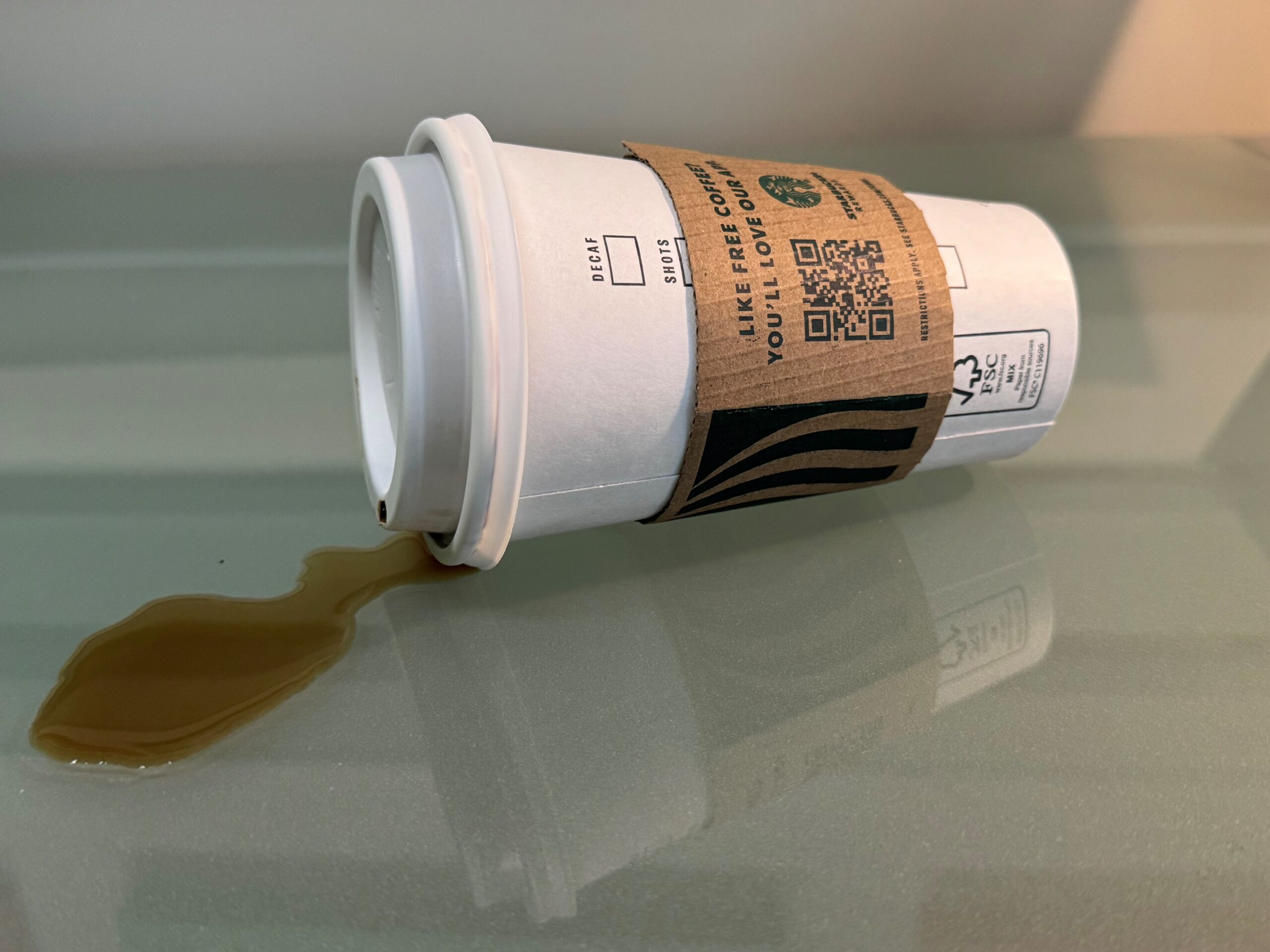
I’m a Starbucks P1 who is probably a lot like many radio P1s. I’ve been a regular customer for more than a couple decades, showing up almost daily, in much the same way some people habitually listen to the radio. I’d say that upwards of 80% of my blog posts were written at a neighborhood Starbucks here in my hometown of Metro Detroit, or on the road when I’m engaged with client visits, conferences, and presentations.
It’s a place where I can grab a cup of joe, open up my laptop, connect to their WiFi, and let ‘er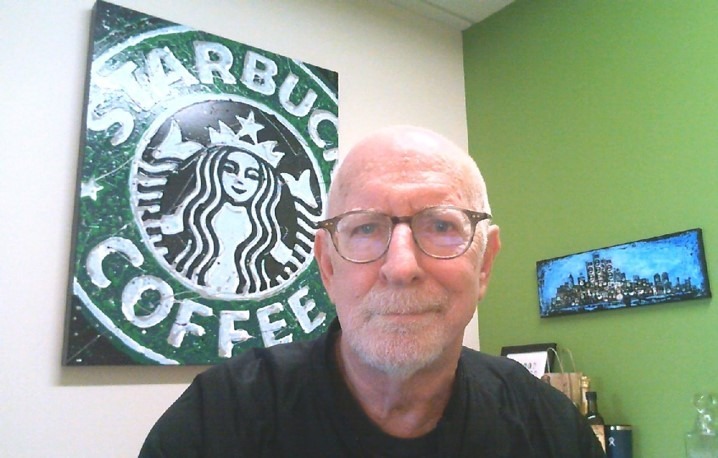 rip. The ambient noise – music, customers, the baristas. the machines – are all part of the experience for me. I’ve done some of my best work as a consultant and a blogger in this environment.
rip. The ambient noise – music, customers, the baristas. the machines – are all part of the experience for me. I’ve done some of my best work as a consultant and a blogger in this environment.
But I’m not a super-happy fan these days.
The Starbucks customer experience isn’t that special now, especially compared to a decade or so ago. The problem may have started with the drive-thru, and was exacerbated by ordering ahead on the mobile app. The baristas are SO busy, it’s hard for them – even with a full staff – to get it all done.
It used to be you’d simply walk in a store, wait in a manageable line, order your drink (and/or food), and wait a minute or two for them to prepare your order. But now with three pathways of service – the counter, the drive-thru, mobile order – you have your choice, but oftentimes, none is a particularly good one.
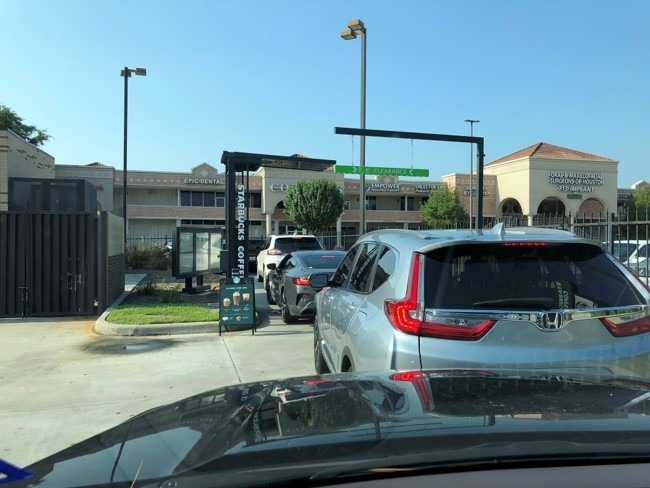
Even with more than a half dozen baristas working a shift, they often cannot keep up with the volume of orders flying in non-stop. It used to be I could avoid the wait by simply walking up to the counter to order. Not anymore. You can stand there waiting for someone to acknowledge you for more than a minute or two. And when a barista finally shows up, you may/may not receive an apology. Of course you’ll no longer get that free drink to make up for the inconvenience. That’s a perk that was retired years ago.
Similar to radio, there are unhappy listeners that keep coming back anyway despite their complaints. But like Starbucks, not with the volume the industry enjoyed before. Some listeners put up with the “mediocre service” – bloated commercial loads, mistakes and errors, “unmanned,” boring stations, the inability to connect with someone at the station ,etc. They hope that somehow someone will figure this out, and institute policies and action steps to turn it around.
Some Starbucks fans (like me) learn to put up with it. But others bail out, looking for a better experience (or a cheaper cup of coffee). At exactly what point that “last straw” drives someone out of Starbucks or away from radio or a favorite station, none of knows for sure. But there are ways of finding out.
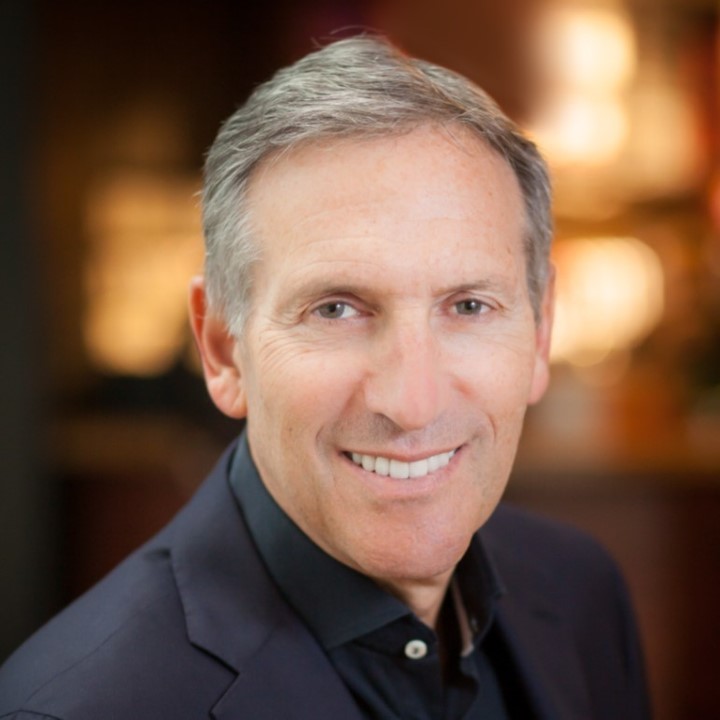
That’s what Howard Schultz (pictured) is attempting to do it from the outside in. You probably know the name. Schultz served as CEO of Starbucks for 37 years. He no longer has any official capacity with the company, having left its board just over a year ago.
Yet, despite being on the outside for the first time in decades, Schultz intuitively believes he knows “what’s wrong,” and is offering up a simple solution. Radio’s corporate denizens probably view people like me just like the Starbucks brass likely looks at ex-honcho Schultz – an outside irritant who thinks he knows it all.
Schultz believes Starbucks is no longer focused on the customer, especially in the U.S., its most important market.
Now, these problems are beginning to hurt Starbucks’ financials. Their recent quarterly report was horrendous, missing projections and suffering a 14% stock dive on the day it was released. On all their key performance indicators – revenue, earnings, and same store sales – Starbucks ended the quarter woefully short.
CEO Laxman Narasimhan pointed the finger at challenging market conditions, concluding “this is a highly challenged environment.” Yahoo! Finance says Starbucks’ quarterly debacle is the company’s first nose dive since the COVID shutdowns went into effect in early 2020.
If you’re in radio, you’ve heard the same rationale from any number of CEOs trying to explain a tepid performance from broadcast radio companies. Economic conditions in general, and the so-called “advertising recession,” followed by the echoes of COVID, and the work from home situation. But does that really explain it?
Not according to Howard Schultz, the former CEO of Starbucks. He’s now looking at the company from the “outside in.” And he intuitively believe he knows “what wrong.”
Though he no longer works for the company, last week, he took to LinkedIn to write down his ideas for how Starbucks needs to turn around the brand…and the company. As I read Schultz’s advice, I couldn’t help but draw some parallels to another legacy business that has also enjoyed better financial quarters than what it endures these days.
Schultz’s diatribe is below, and it harkens back to the fundamentals of how you run and build a business, whether it’s 1984 or 2024. Whether it’s a coffee house or a radio station:
Here are Schultz’s ideas, paired with the broadcast radio applications;
1. Own the lousy performance – no excuses – These days it’s de rigueur to blame a fail, whether it’s a new format or a putrid quarter, on everything but the root cause: the person at the top of the heap who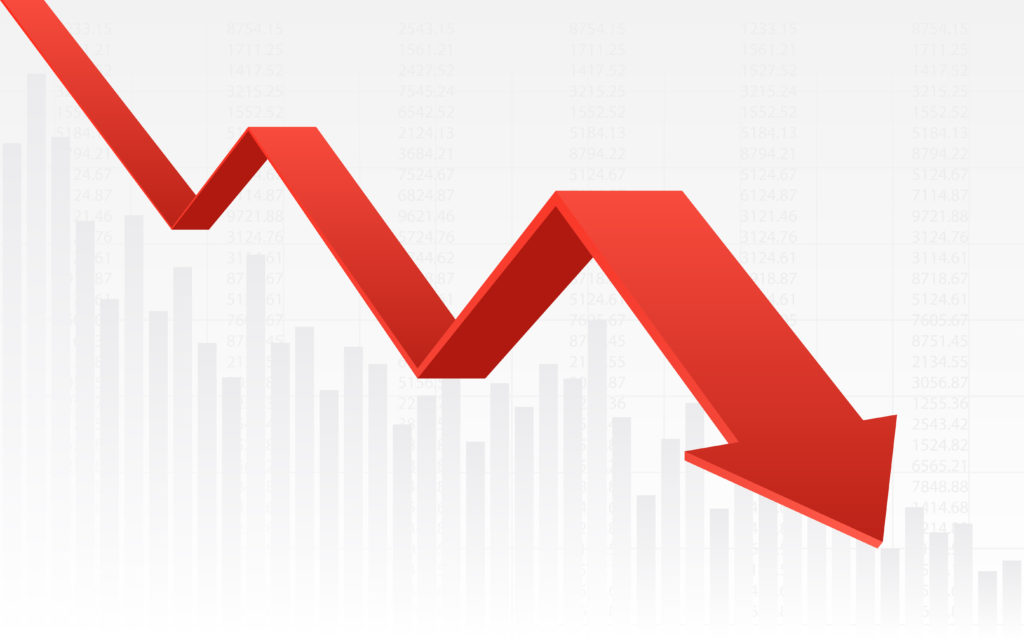 once had a desk placard that read, “The buck stops here.” Schultz believes executives need to show contrition, admit falling short, figure out what went wrong, and attack the problem.
once had a desk placard that read, “The buck stops here.” Schultz believes executives need to show contrition, admit falling short, figure out what went wrong, and attack the problem.
Starbucks once espoused the “third place philosophy” – that is, there’s home, work, and then there’s Starbucks. You may scoff at the premise, but there was a time when Starbucks seemed well on the way to pulling this off, especially given the in-store experience – and the culture. A bad quarter isn’t a fatal setback for Starbucks, but it is a timely reminder to review, come clean, and repair the damage.
2, Fix the core problem – For Schultz, this means focusing on the U.S. stores before worrying about other markets. For radio executives, maybe this means fixing radio before sweating the digital details. If there’s a problem with the core product- radio programming and sales – jumping into the digital space to right the ship is out of order.
We see the same tendency showing up these days in many public radio markets. The tendency is to try to make things happen in the digital realm, especially podcasts. But if the core radio product is flat, weak, isn’t essential, or is simply being ignored, attending to digital endeavors while over the air content takes a back seat isn’t a fix.
3. Adopt a maniacal focus on the customer experience – Schultz points to this philosophy as once being the foundation of how the company did business.
Starbucks once used the LATTE philosophy as a template for keeping its customers happy.
Listen to your customers.
Acknowledge the problem and Apologize.
Take action to make it right.
Thank the customer.
Explain what you’ve done (And/or encourage them to come back again and escalate to someone above you.)
And they regularly handed out “free drink coupons” when something went wrong – they got your drink wrong, you had to wait too long, you didn’t like the beverage or service, etc. Baristas regularly handed out these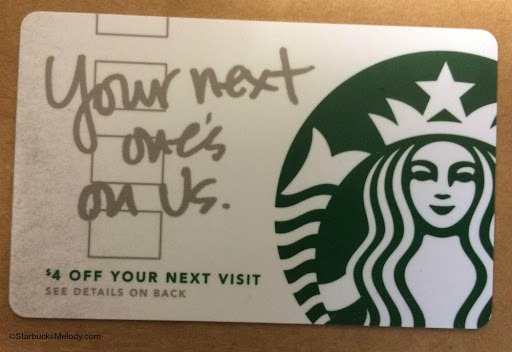 cards. Back in the day, I probably received one of these freebies monthly – without asking for it. There was an internal concept that rewarded customers if something blew up with the experience.
cards. Back in the day, I probably received one of these freebies monthly – without asking for it. There was an internal concept that rewarded customers if something blew up with the experience.
And it was appreciated, not just because of the obvious free drink but because Starbucks “got it.” They understood that when you stopped into a store, you were entering that “third space” – not the office, not the home, but a destination where you could work, relax, schmooze recollect your thoughts, take a breather, and get back out there to fight the good fight.
In this way, customers kept coming back, always with the realization Starbucks didn’t just care about the taste or temperature of their coffee or Americanos – they wanted to be sure your experience was top-notch, leaps and bounds ahead of everyone else.
Schultz notes the focus of the company should once again be on the experiential – not the transactional.
4. It’s not about the data – it’s about the stores – Schultz believes addressing Starbucks’ issues needs to occur at the point of the spear. That is, the stores. The radio application is addressing the industry’s softness at the station level where key contact between the audience, advertisers, and the community all take place.
Rather than being obsessed by Nielsen ratings and other statistical KPIs, Shultz suggests that business gets done at the store (station) level. The solutions will not be found on spreadsheets.
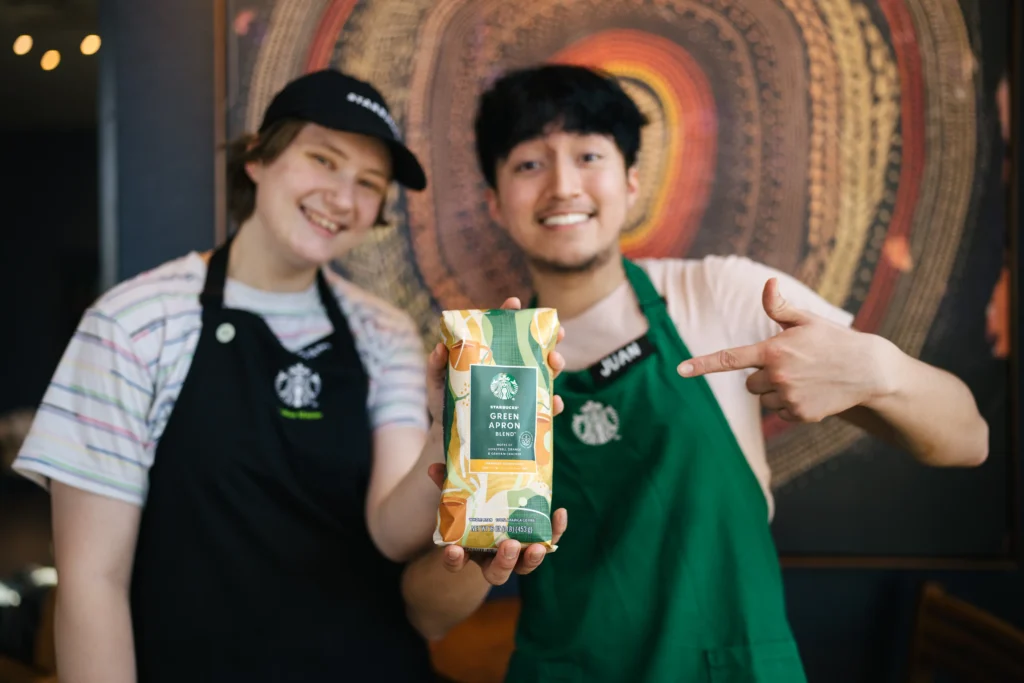
5. Spend more time with those who wear the green aprons – In other words, hang out with the rank-and-file, understand and empathize with their concerns and frustrations, and take to heart their idea of how Starbucks can be turned around. These people are more invested in the business than C-suite types often give them credit for.
I believe similar answers, suggestions, and innovations might come from those who ply their craft in the air studios of radio stations – the people on the air who directly connect with radio’s customers: the listening audience.
What are they thinking? How can radio broadcasters provide a different product than consumers are getting from other audio competitors – podcasters, streamers, satellite radio stations?
Schultz calls it “innovation that inspires….and creates differentiation in the marketplace.” In order to turn around its perceptions, its product, and its experience, radio needs to start thinking alone these lines.
So make of Howard Schultz and my rants as you will. Are they the products of aging, cantankerous former execs who take pot shots at the industry from the outside looking in? Or do they bring a sense of vision and perspective that cuts to the quick of the challenge?
If you’d like to talk about it, use the comments. Or stop by and let’s grab a cup of coffee. I know a place.
- For Radio, The Perils Of Rebranding - May 30, 2025
- There’s No Failure In Radio - May 29, 2025
- It’s Not An Innovation If You Can’t Make It Work – And Last - May 28, 2025




“How can radio broadcasters provide a different product than consumers are getting from other audio competitors – podcasters, streamers, satellite radio stations?”
This is the crux of the matter. Radio used to be timely and relatable, not just in the moment with listeners, creating the moment with listeners. It wasn’t just the music or talk. Ads could be as clever, engaging, and memorable as any other content. Maybe when AI can create that it will replace humans, assuming that PEOPLE are listening to radio.
I have to agree with Brian J Walker on clever and engaging ads. A lot of my own career was spent crafting memorable radio spots, with the philosophy that commercials had to be as entertaining as the program/station they were on. They weren’t an interruption to the programming, they were part of the experience. Channeling Ed Sullivan for a moment, they were the plate-spinning juggler in between the headliners; NOT the guy who stopped the show to sweep the stage.
I don’t have a solution as to what to do. But eight-minute stopsets filled with emotionless blahblah copy — SOME of it being read by A.I.s now — isn’t helping the listener, the station or the advertiser very much.
Ries and Trout used to call it “going down to the front”. Schultz and you are correct Fred- it doesn’t matter if it’s 1984 or 2024, it all begins with user experience. If more decision makers spent more time “going down to the front” (listening to their stations with a critical ear, visiting clients and former clients, asking employees what barriers need to be removed or resources provisioned to better deliver product/service) things would start to change. Somebody also once said if you aren’t part of the solution, you are part of the problem. Radio biggest problem is not enough decision makers have the courage to go “Full Schultz” and admit the obvious, prescribe a solution(s), invite everyone in the org to join in, provide resources (even a few) to get it done and slowly watch things transform into something better.
One other thing about Starbucks that I’ve heard second-hand is that the experience in the co-located/co-branded locations in, e.g., supermarkets can be different–at least partly since those locations can utilize store employees instead of dedicated Starbucks employees. (Officially, the closest Starbucks to my home is in a Harris Teeter.) That said, for various reasons, I’ve more frequently patronized Dunkin’–although I haven’t even gone there recently.
Beyond that, a lot of this coincidentally dovetails with what I’ve seen from the just-released What Women Want study.
I think these mobile apps where you can order ahead of the line is starting to generate some blowback. Rarely is my day planned down to the minute, so when I get time to grab lunch, I have to do it right then. I don’t have time to order ahead. Other people I’ve talked to are irritated by the ability for people to order ahead and skip the line of other customers who have been waiting.
I can think of a handful of people who have stopped going to Starbucks for this reason. I wonder sometimes, how many more are there who have quietly quit like this.
It’s like when a station fires a jock, and the PD tells me “We only got a handul of emails.” I wonder how many others are pissed off, but never bothered to write.
The other aspect of moobile ordering is that I see people who thought their beverage, etc. would be ready. They can wait around for 15 or more minutes because the baristas are so backed up. Sometime, I see these people walk out of the store – without an order they prepaid for. Hard to imagine they’ll be back anytime soon.
The money should go to the content. There is no other..no other reason to listen. Otherwise you are a transmitter operator.
Our local Starbucks changed a couple years ago. They water down the Flat Whites and Lattes. There is no reason to go to that location. It’s just another store that just sells hot liquid.
Sadly, Jim, this is becoming the reality. Thanks for the comment.
Both Starbucks and radio used to provide a “welcoming” experience to the consumer. It was your hangout. Where you were guaranteed a smile and a product that soothed your soul or inspired you to get on with your day.
Not anymore.
I don’t go to Starbucks much now, and when I do, it’s drive-thru (when the line looks reasonable, which is rare.) I don’t like the now-sterile environment in the stores. Metal and glass and not much else. No more sink-into chairs. No one smiles, no one seems terribly happy to be there.
When you have over-worked radio personalities doing shows on multiple stations, you’re not going to get that authentic “smile.” Hell, you’re lucky if they remember what station they’re on. Hard to salute the station flag when you have several waiving at you.
When I left my full-time commercial gig to step into noncommercial radio, I was leaving a job where I was programming and doing music for one station, music director for two others in two different markets, doing air shifts on three stations, doing morning news in one market and afternoon news in another and fill-in news in a third. I gave it my best shot to make my shows local and topical, but I felt like I was on a hamster wheel most of the time.
Radio has to stop doing that to their front line – the people directly serving the customers. It’s not just about the music (or the coffee.) It’s about the experience.
Dianna, I cannot disagree with any of this. As you eloquently and accurately point out, brand dilution begins at home. Whene front line workers are wearing too many hats, and there are a half dozen brands in the building, it is difficult for any one to get its due. Thanks for contributing to the conversation.